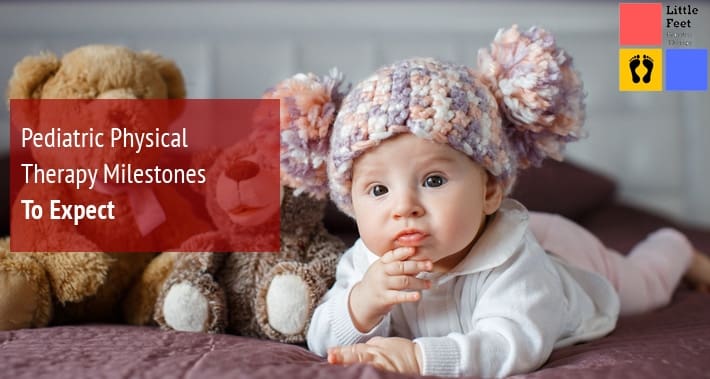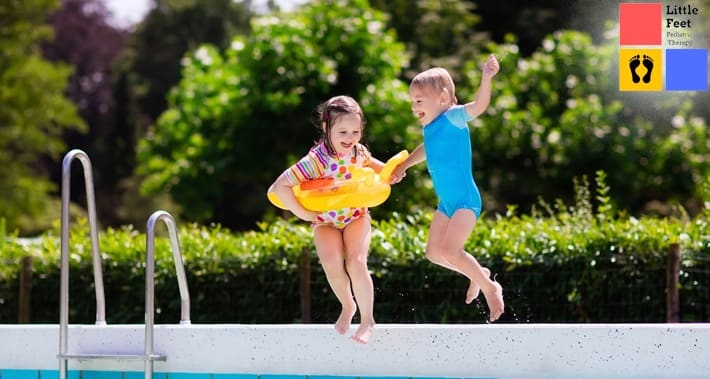
We all hear about developmental milestones, but it can be hard to understand what they are.
As your child grows, you’ll hear about the different milestones they should be meeting.
Children learn at different rates, but it’s good to have an understanding of what expectations there are when it comes to your child’s development.
If you’re concerned that your child is falling behind their peers, pediatric physical therapy near me can make a big difference.
In particular, pediatric therapy for gross motor developmental delay can help if your child is having difficulty with the larger movements of their body.
Keep reading to find out more about the physical therapy milestones your child should be reaching.
What Is A Physical Therapy Milestone?
Physical therapy milestones are general ways to measure your child’s development which, if not met by a certain age, may mean your child needs physical therapy intervention.
Children are all different from each other, so if your child is a couple of weeks behind but still seems to be making progress, that’s not cause for concern.
However, if such milestones have passed by a couple of months and your child doesn’t seem to be making any progress toward them, it may be good to seek out physical therapy.
It’s important to do this at a young age, since early intervention pediatric physical therapy treatment tends to be more effective than the “wait and see” approach.
The earlier you get your child the help they need, the less time they have to learn bad habits that they’ll have to unlearn later.
Pediatric Physical Therapy Milestones
Here we’ll provide a guideline of pediatric physical therapy milestones so you can get an idea of how your child is doing.
Remember that these milestones are meant as a guide and not a rulebook.
3 Months Old
By 3 months old your baby should be able to lift their head, move their limbs, and wave their fingers.
Signs of difficulty at this age might look like their head tilting to the side more than is usual, hands that are always closed into fists, or stiffening up when you hold them.
This could indicate poor muscle development which could affect their locomotion.
It could also indicate they need torticollis physical therapy treatment.
By 4 Months
By four months old your baby should be able flex and extend their arms, tolerate tummy time for extended periods, and roll over.
Once your baby is able to roll from back to belly and belly to back again they will sleep better, so this milestone is especially vital.
If they don’t meet these milestones, your baby may have trouble learning to play independently.
By 10 Months
By 10 months old your baby should be able to sit without arm support, reach and grab objects, start to crawl, and use both of their hands.
You might notice delays with these developmental milestones if your baby has trouble reaching for objects, sits with a hunched back, or has difficulty moving from sitting to laying down.
If these milestones aren’t met, your baby may have increased difficulty with muscle development and might have delayed sensory development (since they won’t interact with toys and other sensory objects as much).
By 12 Months
By 12 months old your baby should be able to pull themself up to stand, cruise along furniture, support themselves with their legs without help, and easily transition into different body positions like sitting and laying down.
Issues meeting these milestones may look like your baby having difficulty with crawling, favoring one side of their body, unable to sit independently or being unable to support their weight without help.
By about 15 months, they should be able to walk on their own as well.
Not meeting these milestones may indicate delays in play skills, mobility, and sensory development.
By 24 Months
By 24 months old your child should be able to walk up and down steps independently with a railing, jump with two feet together, and catch and throw medium sized balls.
Difficulty during this phase may look like being unable to kick a ball without losing balance, jumping with split feet, having trouble running, or toe walking.
If your child is delayed meeting these milestones they may not be able to play independently or interact with their environment properly.
This can have a serious impact on their social and emotional skills development.
Toe walking in particular can be a sign of autism spectrum disorder.
That can cause wide ranging issues as well, but early intervention autism spectrum disorder pediatric treatments can help mitigate these issues.

By 36 Months
By 36 months your child should be able to balance on one foot, jump with two feet together, and walk on tip toes.
At this age these issues may affect your child’s confidence, decreasing their social opportunities.
They may not be able to use playground equipment, plan effectively, or feel confident socializing with other children their age.
By 4 Years
By 4 years old your child should be able to balance on one foot for 10 seconds, walk up and down stairs alternating feet without a rail, hop on one foot, and have enough coordination to do things like skipping, jumping jacks, and galloping.
If your child is struggling with milestones at this age it might look like them being unable to walk on a straight line or having trouble walking up and down stairs without using a railing.
They may also be the child who is not interested in the playground equipment because it seems too hard or scary for them.
Struggling with developmental milestones at this age could mean decreased confidence while playing movement based playground games.
By 5 Years
By 5 years old your child should be able to walk backwards, jump side to side, and learn how to do motions like skipping or hopscotch.
If they’re having difficulty at this age they may not be able to catch and throw a tennis ball or hang from a bar for at least five seconds.
At this age your child will really start comparing themself to their peers, leading to difficulties participating in group activities if they can’t keep up.
What If My Child Isn’t Meeting These Milestones?
If it’s only a few weeks beyond a certain developmental milestone, it’s usually not a big deal.
Children all grow at different rates and there’s no exact schedule for learning.
This is especially true if they seem to still be making progress toward that goal.
However, if you’re noticing that your child is falling behind significantly or not making much progress toward new milestones, it may be an indication that they have an underlying condition.
If that’s the case, it may be a good idea to look into pediatric physical therapy.
Underlying conditions can be anything from cerebral palsy to ADHD to sensory processing disorder, among many others.
No matter what the condition, a pediatric physical therapist will be able to assess your child’s unique needs and come up with a plan.
Book Your Appointment With Little Feet Pediatric Therapy Today
No one ever wants to feel like their child is falling behind.
With help, though, your child can reach their fullest potential.
Here at Little Feet Pediatric Therapy, we’re here to help.
Book your appointment with Little Feet Pediatric Therapy today.
► 3535 Randolph Rd, Charlotte, NC 28211
► 1331 H St NW Ste 200, Washington, DC 20005
► St. Louis, MO
► Raleigh, NC
Founded in 2019, Little Feet Therapy offers on site pediatric physical and occupational therapy treatments for children from 2 months to 18 years old with physical and developmental concerns. Our clinics focus on providing therapy in a child’s natural setting where your child is in familiar surroundings, it puts their mind at ease and helps them focus more on the work they’re doing with their pediatric therapist. Our therapists will work with your child at your home, at school, at daycare, or another place in the community where they feel most comfortable.